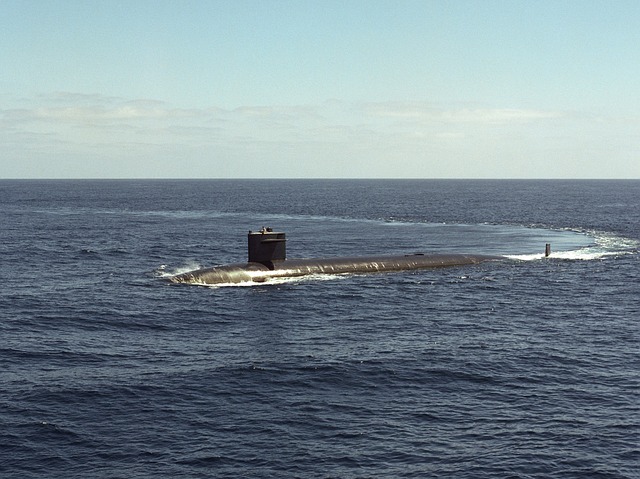(NationalSecurity.news) There was a time when it was unthinkable that the People’s Liberation Army Navy, or PLAN, would reach a point where it could compete with the very seasoned, well-armed and highly technologically capable U.S. Navy, especially in terms of submarine warfare.
But with each passing year, China closes the U.S. submarine advantage and now, say some experts, the PLAN is within reach of achieving parity on some levels.
In January 2011, The National Interest (TNI) reports, the cover of the Chinese naval magazine Modern Ships, published by the giant state-owned shipbuilding conglomerate CSIC, carried this simple headline in Chinese: “The 056 Has Arrived.”
In what was an impressive display of shipbuilding prowess, TNI reported, in the ensuing four-and-a-half years China has built some 20 ships in the new class of light frigate or corvette. An interesting comparison: The U.S. Navy, during an even longer period, has launched less than half that number of its own new, small surface combatant, the Littoral Combat Ship (LCS). Worse, the LCS is not yet equipped with an anti-ship cruise missile (ASCM), like its Chinese counterpart.
However, what is more impressive about the Chinese warship is that it fills a niche in the PLAN’s arsenal that was much-needed: a requirement for a small, inexpensive, versatile, rugged and well-armed patrol ship to represent Chinese interests during maritime disputes.
Even more impressive still, however, is the role the Type 056 plays in ASW – anti-submarine warfare – especially when other PLAN advances in ASW are considered.
One development is the Z-18F, an ASW-optimized version of a large workhorse of Chinese naval aviation, the Z-8 transport helicopter. Another is the development of the Z-20, which appears to be a carbon copy of the U.S. Navy’s SH-60 Sea Hawk, a frontline ‘copter designed, in part, for the ASW role.
Just 10 years ago, the PLAN may have operated as few as two dozen large Z-8s, but beginning in the 2004–2005 time frame, production was ramped up considerably, indicating that the aircraft became a priority for the Chinese navy. A 2014 Modern Ships cover story also noted that the choppers were being equipped with new longer-range surface search radar; a graphic with the cover story showed a Z-18F hefting four ASW torpedoes, which is significantly better than the predecessor Z-8.
But both aircraft – six of the Z-18Fs are expected to be aboard China’s new, and lone, aircraft carrier, the Liaoning – will likely be augmented in the ASW role with drones, like those the U.S. Navy has been developing already.
These developments, coupled with Chinese advances in submarine development, would make any intervention by the U.S. Navy – and in particular, U.S. Navy submarines – much more difficult in the event of a conflict between Beijing and, say, Taiwan or Japan, both of which are U.S. allies.
A recent white paper from the Heritage Foundation observed that China doesn’t necessarily seek conflict with the U.S. but rather may attempt to press advantages in other ways.
“China does not necessarily want conflict with the United States, but an environment is being created, in part because of the changing balance of power, in which China’s leaders might be tempted to believe that confrontation with the U.S. will deliver to them what Sun Tzu called the ‘ultimate victory,’ which is victory achieved without firing a shot. That is destabilizing the region and creating a risk of escalation, either deliberate or through miscalculation,” says an abstract of the paper by James Talent, a former U.S. senator from Missouri and distinguished fellow at Heritage.
See also:


